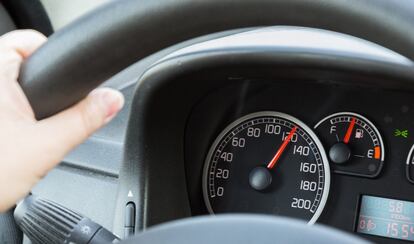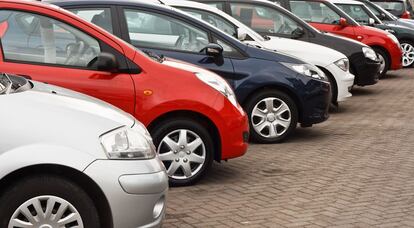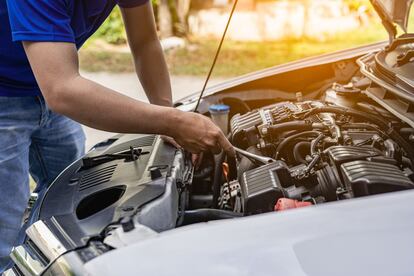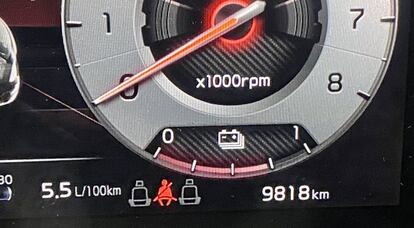How many miles should a used car have when you buy it?
The mileage is a crucial factor when you are in the market for a second-hand vehicle, but it is not the only thing you should look out for

When you are looking to buy a used car, one priority is finding a vehicle that can still go thousands of miles without giving you any trouble. Common sense suggests that the fewer miles a second-hand car has, the longer it will serve its owner faithfully. However, if you are willing to consider one with a few more miles than you originally intended, you might end up making a good purchase that will suit your budget better.
But is buying a high-mileage car a good idea? And since a higher mileage often means an older vehicle, exactly how old is too old for a used car? Is “the lower the mileage, the better the car” an unbreakable rule of thumb? The answers to these questions are a bit more complicated than one might think; there are exceptions, and they are not always obvious.
Let’s consider some key aspects when deciding which used car to buy.
Use and abuse
When it comes to cars, the line between use and abuse is very fine. Some owners are so meticulous that they keep all their receipts, be it for oil changes, refueling or even washing. Others only become aware of the need to service their car when the check engine light starts flashing on the dashboard.
When two similar vehicles have different mileages, the better maintained car should be chosen over the one with the lower mileage. Of course, there is a limit to this: a car with 30,000 miles is better than one with 200,000. But if the difference is only ten or twenty thousand miles, which one should you choose?

To get an idea of a car’s maintenance and service history from its previous owner, the best sources are the actual receipts for services performed, or a record of its repairs, if available. If these maintenance records are not available, a CARFAX report will reveal the vehicle’s service history.
These reports also include any previous accidents, something else that you should avoid at all costs, regardless of mileage. Feeling confident about a car’s history is probably more important than any other factor, including the odometer reading. Of course, a complete inspection of the car should not be ruled out.
Unused cars
The other side of the coin is disuse. Sometimes a car is barely used, spending most of its life collecting dust in a garage. When such a car comes on the market, its owner will probably try to use its abnormally low mileage to try to get the best price.
This vehicle may be worth it at first glance, but there is a problem. When a car remains parked for a long time, some parts break down. Rubbers, seals and gaskets are a perfect example of this: over time, these flexible components become brittle and lose their effectiveness, regardless of use. It is not uncommon for a car with an unusually low mileage to leak when it starts being used daily, due to these rubber parts failing.

The irony is that if the car had been driven regularly, this would not be a problem; the thermal expansion and contraction process that occurs when the engine is running, along with the light lubrication from passing fluids, tend to extend the lifespan of these rubbers.
Overuse
You should also be wary of a newer car that has accumulated a mileage well above the average, which is between 12,000 and 15,000 miles per year. Such a high mileage means that the driver has spent quite a lot of time behind the wheel; racking up miles at such a rate means that more maintenance will be needed sooner.

Maybe you can buy a higher-mileage car for less, but it will also mean that you are much closer to major servicing for things like timing belts, cooling systems and brake pads. The maintenance of these systems is not cheap, and it is an expense that can be deferred if you buy a car with fewer miles.
How old is too old?
With the aforementioned annual average mileage, a five-year-old car is likely to have 60,000 to 75,000 miles under its hood; in the same vein, a ten-year-old car will show 120,000 to 150,000 kilometers on the odometer.
At a certain point in a car’s life, unexpected repairs will begin to be needed with increasing frequency. There is no specific age or mileage at which this occurs, but it often does when the car is eight to 10 years old and reaches 100,000 to 120,000 miles. This is inevitable; cars don’t last forever. Thus, avoid the cars that are older than 10 years and display six figures on the odometer.

Highway versus city
Another thing to consider is the type of mileage that a vehicle has accumulated. A car that is being sold in a big city neighborhood will have had a much rougher life than one that is being offered in a small, rural town.
Why? Because while the big city car has spent its time driving over potholes and swerving past traffic in its rush to go from stoplight to stoplight, the country car has been calmly cruising without having to deal with so much traffic or haste.
A car in a rural area will probably accumulate more miles than the one in a densely populated city, but those miles add up with a certain ease that you just cannot find in urban driving.

The bottom line
Mileage should be considered one of the most important factors when buying a used car – but it is not the only one. You should be looking for the lowest-mileage car you can get, yes, but also one that has had regular maintenance, has never been in an accident and has been used regularly.
Sometimes this criteria means giving up a car with fewer miles. Don’t worry; more miles do not destroy a car. But a lack of care and maintenance does.
Sign up for our weekly newsletter to get more English-language news coverage from EL PAÍS USA Edition
Tu suscripción se está usando en otro dispositivo
¿Quieres añadir otro usuario a tu suscripción?
Si continúas leyendo en este dispositivo, no se podrá leer en el otro.
FlechaTu suscripción se está usando en otro dispositivo y solo puedes acceder a EL PAÍS desde un dispositivo a la vez.
Si quieres compartir tu cuenta, cambia tu suscripción a la modalidad Premium, así podrás añadir otro usuario. Cada uno accederá con su propia cuenta de email, lo que os permitirá personalizar vuestra experiencia en EL PAÍS.
¿Tienes una suscripción de empresa? Accede aquí para contratar más cuentas.
En el caso de no saber quién está usando tu cuenta, te recomendamos cambiar tu contraseña aquí.
Si decides continuar compartiendo tu cuenta, este mensaje se mostrará en tu dispositivo y en el de la otra persona que está usando tu cuenta de forma indefinida, afectando a tu experiencia de lectura. Puedes consultar aquí los términos y condiciones de la suscripción digital.
More information
Últimas noticias
All the effects of gentrification in one corner of Mexico’s Colonia Roma
Palestinian reporter Youmna El Sayed: ‘My family told me I had to choose between being a journalist or a mother’
‘Sleepless City’: The light of cinema illuminates Madrid’s Cañada Real shantytown
The new language of the workplace: Knowing how to ask AI questions is more important than using it
Most viewed
- The low-cost creative revolution: How technology is making art accessible to everyone
- Christian Louboutin: ‘Young people don’t want to be like their parents. And if their parents wear sneakers, they’re going to look for something else’
- US sanctions against jailed cartel leader ‘El Marro’ highlight Mexico’s lack of control over its prisons
- Liset Menéndez de la Prida, neuroscientist: ‘It’s not normal to constantly seek pleasure; it’s important to be bored, to be calm’
- ‘El Limones’ and the growing union disguise of Mexican organized crime










































